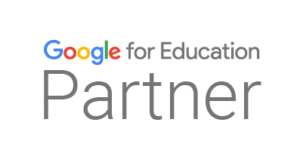Hybrid learning blends traditional classroom instruction with online education, creating new opportunities for students. However, this model raises concerns for school authorities about student safety in digital spaces. The internet is a powerful educational tool, but without proper safeguards, it can expose students to risks. By implementing robust student safety measures, schools can create a secure digital environment that enhances learning, boosts teacher confidence, and builds parental trust. This blog explores five key pillars to ensure student safety in hybrid learning: firewalls, content filtering, managed WiFi, device monitoring, and safe browsing practices. These strategies demonstrate that safety and effective learning can coexist seamlessly.
1. Firewalls – The First Line of Defense
Firewalls act as a protective barrier between school networks and external threats. They filter incoming and outgoing traffic to block harmful content and cyberattacks. For hybrid learning, firewalls ensure student safety by preventing access to malicious websites and unauthorized applications. Schools can customize firewall settings to align with educational goals, allowing access to approved resources while restricting risky sites. Regular updates and monitoring of firewall systems are essential to maintain security. By investing in robust firewalls, schools create a safe digital foundation that supports focused learning and protects sensitive data, fostering trust among parents and educators.
2. Content Filtering – Curating Safe Online Content
Content filtering is critical for maintaining a secure digital environment in schools. It restricts access to inappropriate or distracting websites, ensuring student safety during online learning. Advanced filtering tools allow schools to block harmful content, such as explicit material or social media platforms, while permitting educational resources. These systems can be tailored to different age groups, ensuring age-appropriate access. Regular audits of filtering policies help schools stay ahead of emerging online risks. By implementing content filtering, schools promote a distraction-free environment that enhances student focus and supports the security and digital safety of children.
3. Managed WiFi – Securing Network Access
Managed WiFi systems provide schools with control over network access, a vital component of student safety. These systems allow administrators to monitor and restrict devices connecting to the school’s network, preventing unauthorized access. Managed WiFi also enables bandwidth prioritization for educational tools, ensuring smooth access to learning platforms. By segmenting networks for students, teachers, and guests, schools reduce security risks. Regular updates to WiFi protocols and strong encryption further protect against intrusions. Managed WiFi fosters a secure and reliable digital environment, giving teachers confidence to integrate technology into hybrid learning effectively.
4. Device Monitoring – Keeping Tabs on Digital Activity
Device monitoring is a proactive approach to ensuring student safety in hybrid learning environments. Schools can use monitoring software to track student activity on school-issued devices, identifying potential risks like cyberbullying or exposure to harmful content. These tools provide real-time alerts to educators about concerning behavior, enabling timely interventions. Monitoring also helps ensure compliance with school policies, keeping students focused on educational tasks. Transparent communication with students and parents about monitoring practices builds trust. By prioritizing device monitoring, schools enhance the security and digital safety of children, creating a safer online experience.
5. Safe Browsing Practices – Empowering Students and Educators
Teaching safe browsing practices is essential for fostering a secure digital environment. Students need guidance on recognizing phishing attempts, avoiding suspicious links, and protecting personal information online. Schools can integrate digital literacy into their curricula, emphasizing responsible internet use. Teacher training plays a crucial role here, equipping educators with the skills to guide students effectively. Professional development programs can help teachers model safe online behavior and address digital risks confidently. By empowering students and educators with safe browsing knowledge, schools promote student safety and create a culture of digital responsibility.
Building Trust Through Professional Development
To sustain these pillars, schools must invest in professional development for educators. Teacher training programs focused on digital safety equip educators with the tools to navigate hybrid learning challenges. These programs cover topics like managing online classrooms, recognizing cyber threats, and implementing safety protocols. Well-trained teachers can confidently guide students in using technology responsibly, reinforcing student safety. Professional development also fosters collaboration among educators, enabling them to share best practices for digital safety. By prioritizing teacher training, schools ensure that safety measures are consistently applied, creating a cohesive and secure learning environment.
The Path Forward for Safe Hybrid Learning
The five pillars form the foundation of a secure digital environment for hybrid learning. These strategies address school authorities’ concerns about student safety while maximizing the internet’s educational potential. By implementing these measures, schools create a distraction-free environment that enhances student focus and engagement. Teachers gain confidence in using digital tools, knowing that robust safeguards are in place. Parents, too, feel reassured that their children are protected in online spaces. Together, these efforts demonstrate that safety and effective learning can coexist, fostering a thriving hybrid learning ecosystem.
In conclusion, prioritizing student safety in digital spaces is not just a necessity but an opportunity. Schools that embrace these five pillars empower students to explore the internet as a valuable educational resource while staying protected. By combining technology with teacher training and professional development, schools can build a secure and inclusive digital environment. This approach ensures that hybrid learning is both effective and safe, paving the way for a future where education and technology work hand in hand.




 1st Floor, H-31, Sector 63,
1st Floor, H-31, Sector 63,